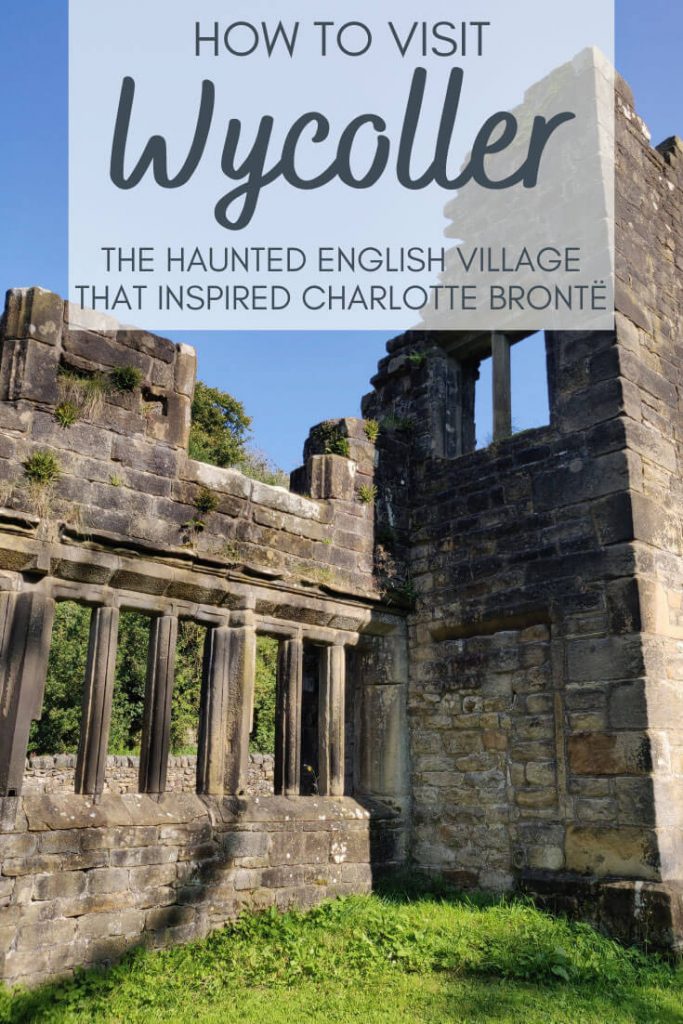Visiting the ruins of Wycoller Hall and the lovely Wycoller Country Park is a wonderful day out in East Lancashire. Only about an hour from both Manchester and Leeds, Wycoller is an idyllic place to visit, full of interesting things to see, intriguing stories and some of the most beautiful scenery in the north of England.
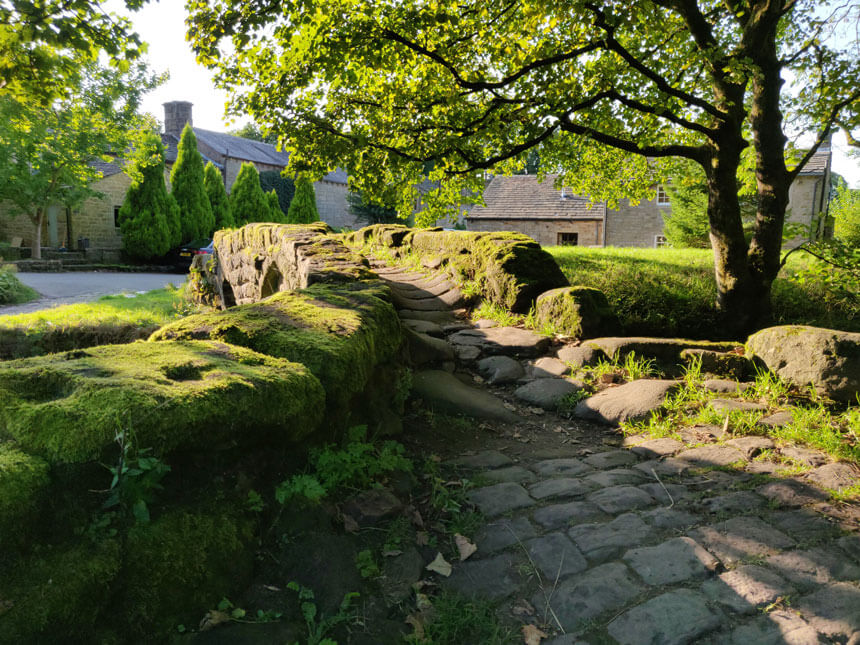
Where is Wycoller and is it worth visiting?
Wycoller is a tiny village in East Lancashire, in the north of England. It’s around 4 miles east of the town of Colne, close to the border with West Yorkshire.
Wycoller is set in a wooded valley, surrounded by beautiful rolling countryside, between wild moorland and brooding Pendle Hill. Although you’re only an hour from Leeds and Manchester, at Wycoller you feel like you’re in the middle of nowhere. The Wycoller Beck flows through the village, crossed by seven lovely bridges, including the picturesque twin-arched packhorse bridge.
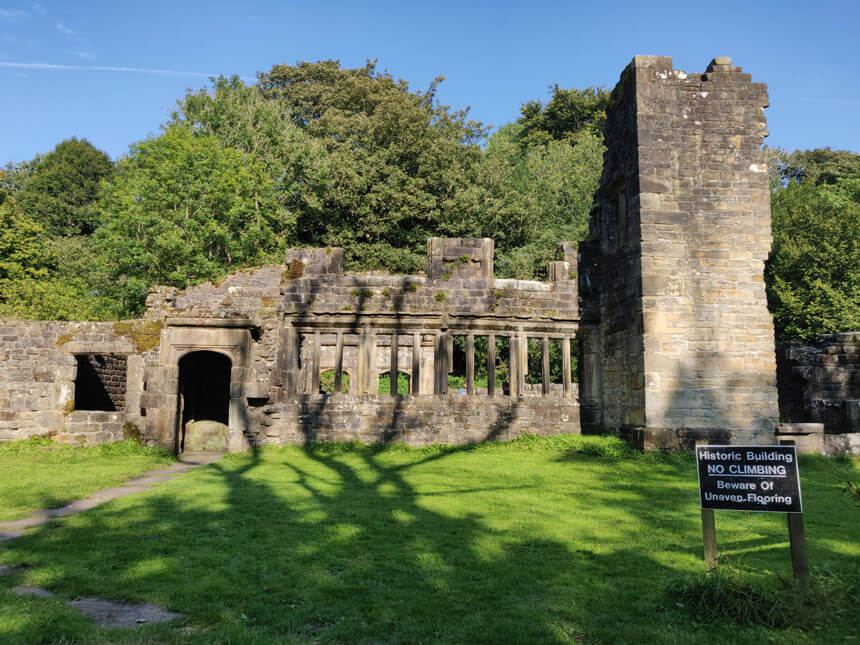
On one side of the bridge you’ll find the village and its quaint old houses which have been beautifully restored and are now much sought-after. On the other side are the ruins of Wycoller Hall, which is believed to have the inspiration for Ferndean in Charlotte Brontë’s novel Jane Eyre.
There are lots of gorgeous walks around Wycoller, but the one you must take during your visit is up behind the ruined hall, through the woods and up the hill following what feels like an ancient path. At the top of the hill you’ll find a strange black UFO-like viewpoint. This is the Atom Panopticon, one of the four East Lancashire panopticons.
Things to do in Wycoller Country Park
There are lots of things to do in and around Wycoller – easily enough to fill an afternoon.
See the ruins of Wycoller Hall
The main attraction at Wycoller is the ruins of Wycoller Hall. The Hall was originally built in around 1550 and was expanded and updated over the next 250 years – at one point the house was three storeys high.
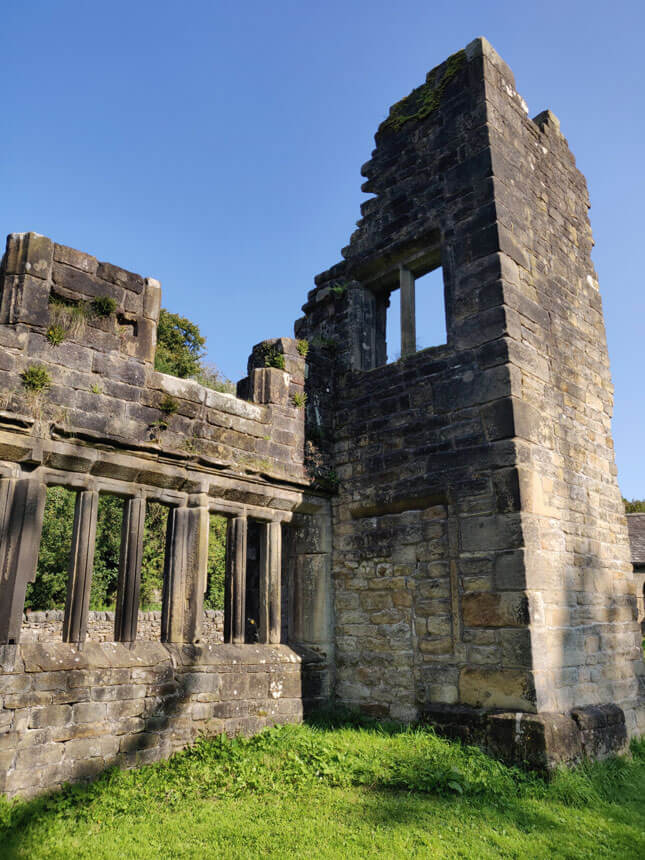
The last inhabitant was Henry Owen Cunliffe, who rebuilt large parts of the hall in an attempt to secure himself a wealthy wife. Henry’s renovations were in the style of a much earlier era, with features like mullioned windows and the giant fireplace in the main room.
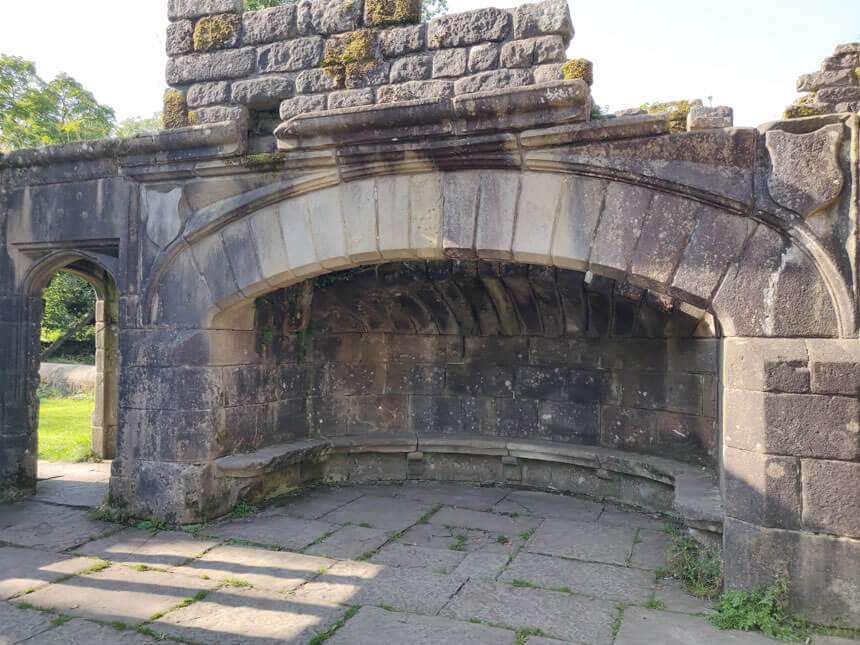
Henry Owen Cunliffe had borrowed heavily against the hall and was also a keen gambler. When he died in 1818, the Wycoller estate was split between his creditors. The doors, windows, roof timbers and some of the stone were sold off during the 1800s to pay for a mill to be built in nearby Trawden.
Despite years of neglect, the hall was mostly intact until the early 1900s, but materials from the hall continued to be plundered. Today, very little above the ground floor survives but the ruins are still very impressive and atmospheric.
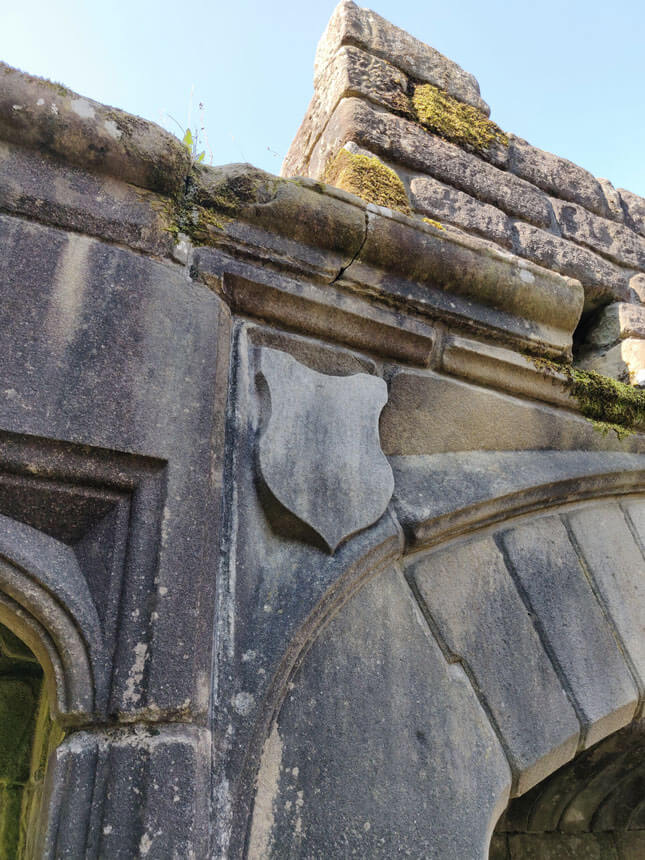
Cross Wycoller’s historic bridges
There are three ancient and historic bridges in Wycoller. The oldest, the Clam Bridge is made of a single slab of stone which may once have been a standing stone. It’s believed to date back to the Iron Age.
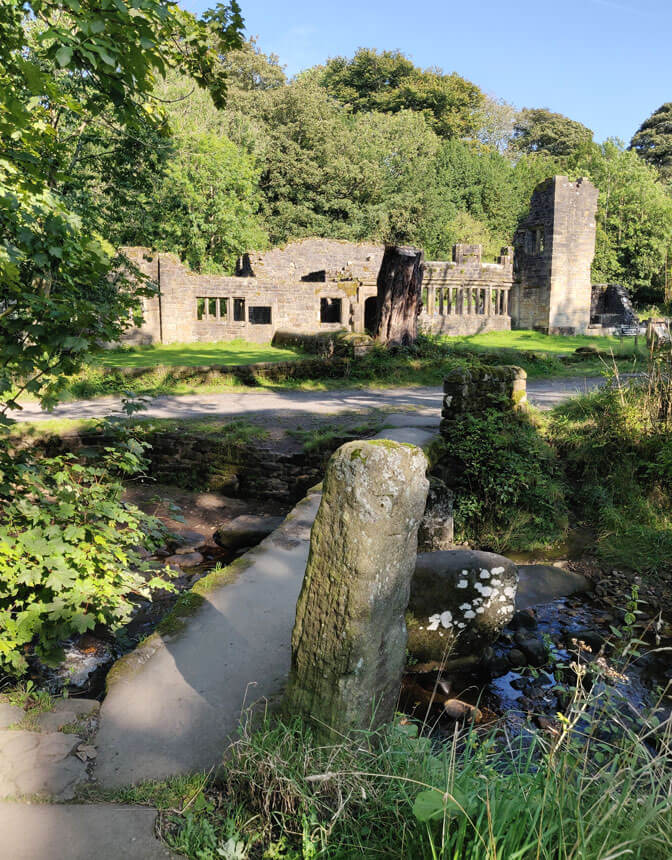
The Clapper Bridge is probably Medieval (although some historians think it might date back to before the Norman Conquest) and is made of simple stone slabs. The deep groove in the middle was worn away by the metal soles of weavers’ shoes over hundreds of years.
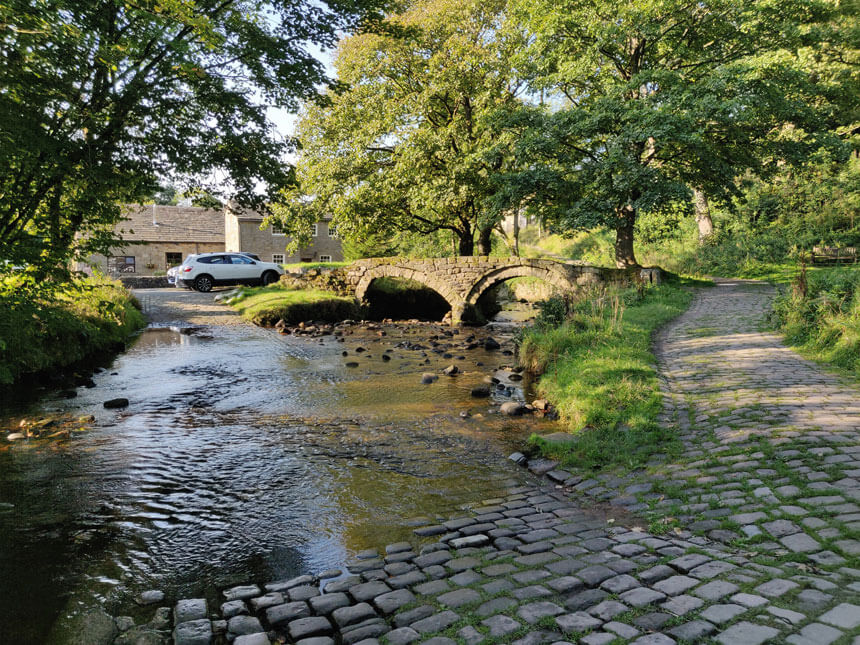
The prettiest bridge in Wycoller is the Pack Horse Bridge, sometimes known as Sally’s Bridge after Henry Owen Cunliffe’s mother. It’s very charming and picturesque, with its two wonky arches and moss-covered stones. It’s believed to date from either the 13th or 15th centuries, but some of the stones are much older. If you look closely, you can see faint prehistoric cup marks – suggesting that they were taken from an ancient site on the moors above Wycoller.
Dream of living in one of the houses in Wycoller village
The houses in Wycoller village are stunning. If you love cute country cottages you’ll be in your element. Gorgeous little cottages with roses round the door, old farmhouses, rustic stone houses with gardens running down to the Wycoller Beck… it’s a perfect rural idyll.
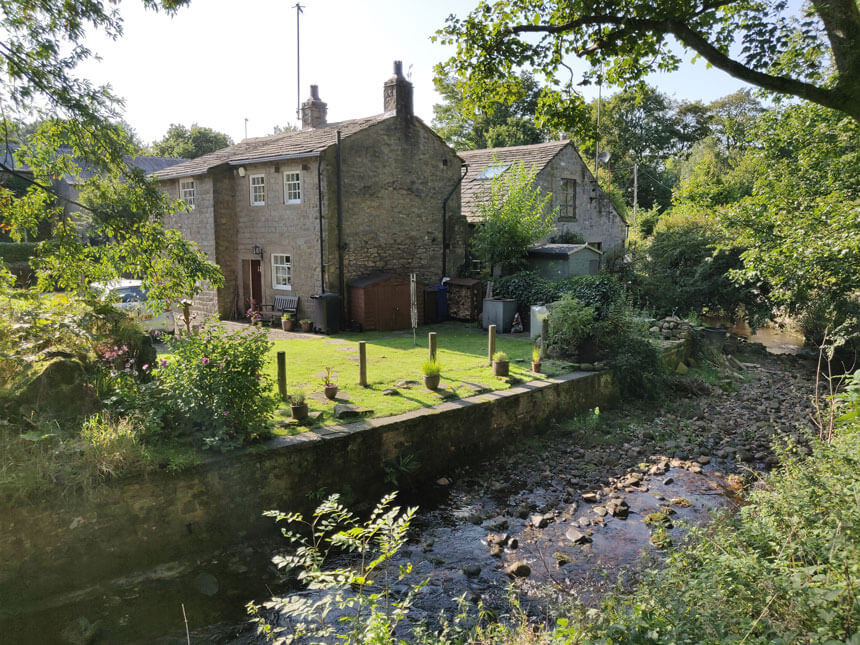
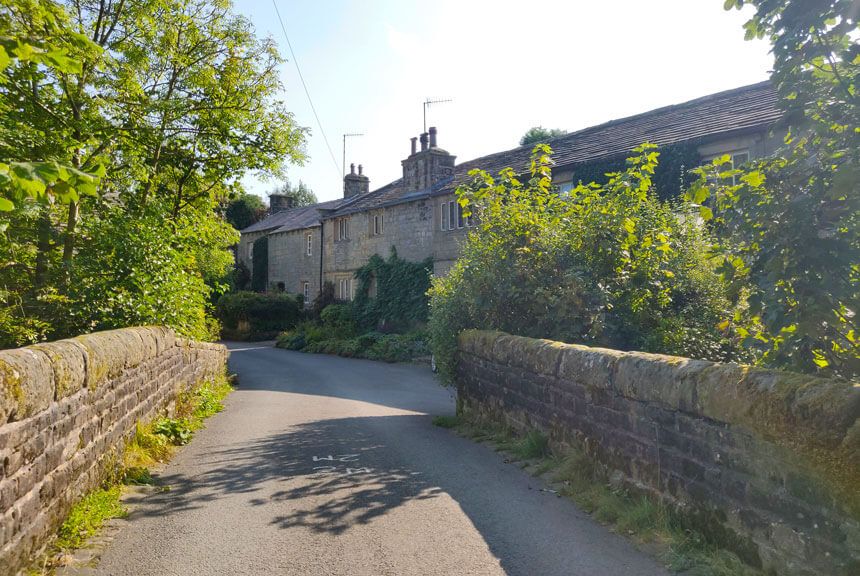
It’s fun to wander around the village wondering which one you’d pick if you won the lottery, but these are private homes so please do respect the owners’ privacy.
See the view from the Atom Panopticon
Behind Wycoller Hall, a path leads up the hill. At the top of the hill you’ll find the Atom Panopticon, one of the four East Lancashire Panopticons that were installed at viewpoints across the area in the mid-2000s.
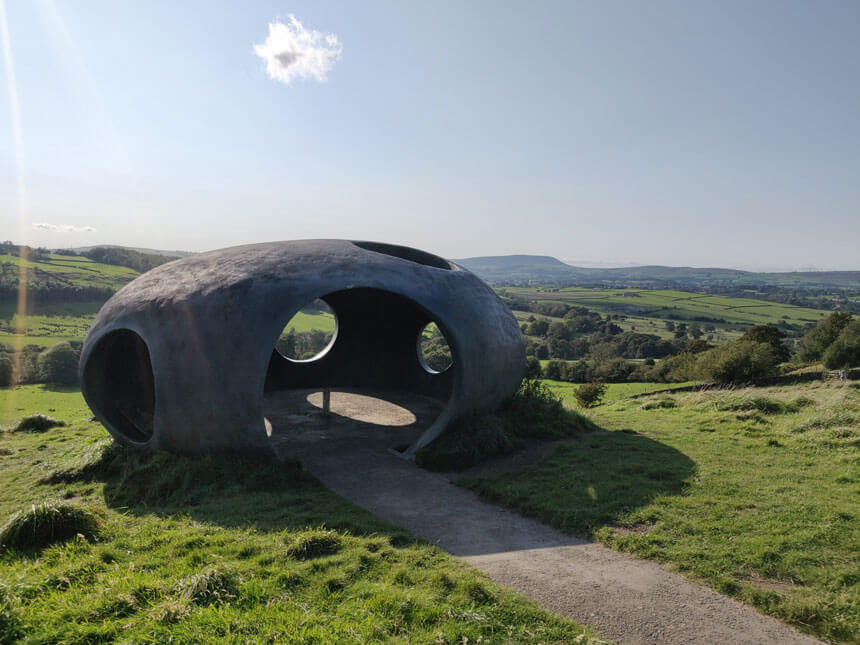
The Atom was designed by Peter Meacock, Andrew Edmunds and Katarina Novomestska and was installed in 2006. It’s made from bronze-coated concrete, with circular holes which frame the lovely views across the East Lancashire landscape towards Pendle Hill.
There used to be a polished globe at the centre which reflected the views back at you; this was vandalised and has been removed, but its absence doesn’t really detract from the experience.
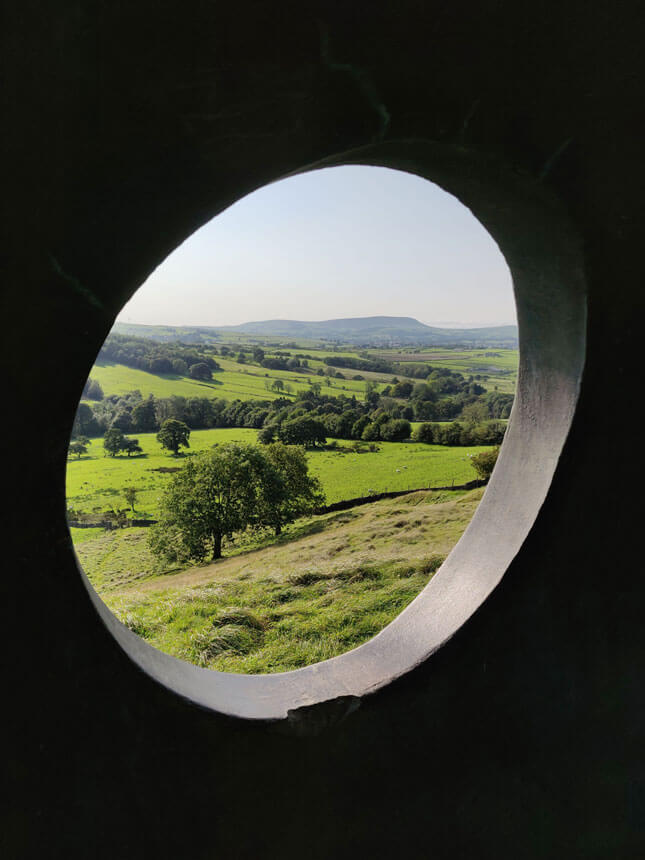
It takes 15-20 minutes to walk up to the Atom from Wycoller Hall on the most direct route. This path is steep in places but there’s a less steep route to the north of the village, past the Pepper Barn study centre, although this route does require walking along a fairly busy road. If you’d prefer to drive to the Atom, there’s a free car park less than a minutes’ walk away.
Search for fairies on the fairy door trail
The woods around Wycoller are full of magic. If you look closely at the trees, you might be lucky enough to see a tiny, brightly-coloured door, showing that a fairy lives there.
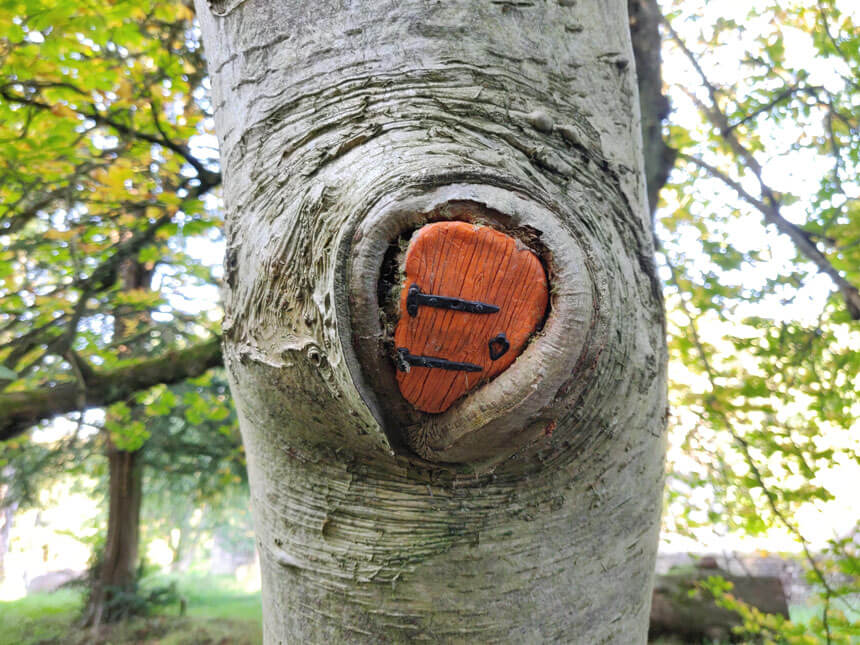
Kids of all ages will love searching for the fairy doors at Wycoller – the best places to look are along the tree-lined road from the car park and along the paths next to the river.
See the willow sculptures
The Atom Panopticon isn’t the only art project at Wycoller. In 2004, artists Jeff and Heather Allen led a community project to create living sculptures made of willow. You can still walk through one of the works, a tunnel and bower made of woven willow branches.
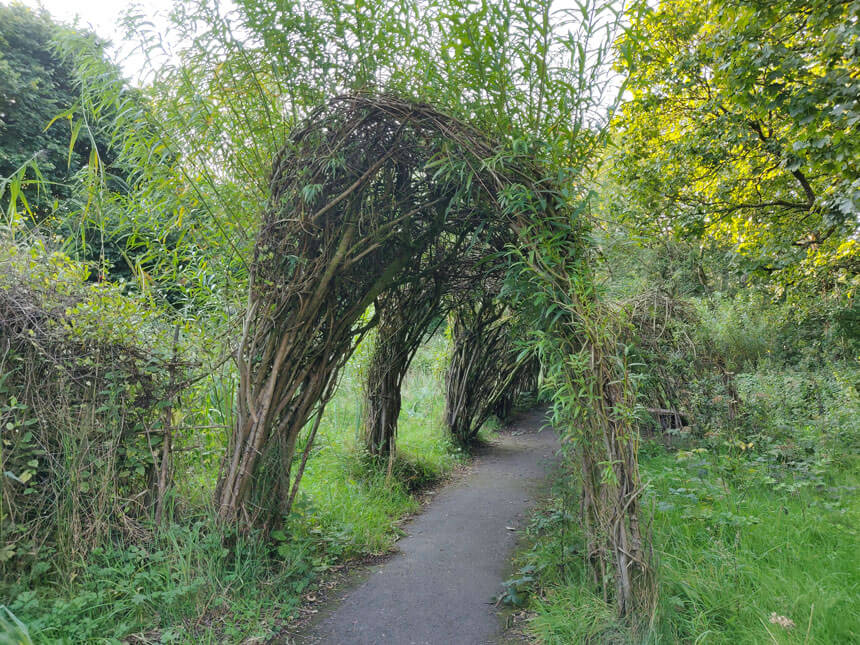
Explore the lovely walks in Wycoller Country Park
Wycoller is the starting point for lots of lovely walks in the East Lancashire countryside. You can continue the short walk up to the Atom Panopticon by carrying on to the rocks at Fosters’s Leap (named after Foster Cunliffe, a relative of the Wycoller Cunliffes who daringly leapt between the rocks) and then back down past some little waterfalls to the Wycoller Beck. From here, you can walk along the riverside back to Wycoller Hall.
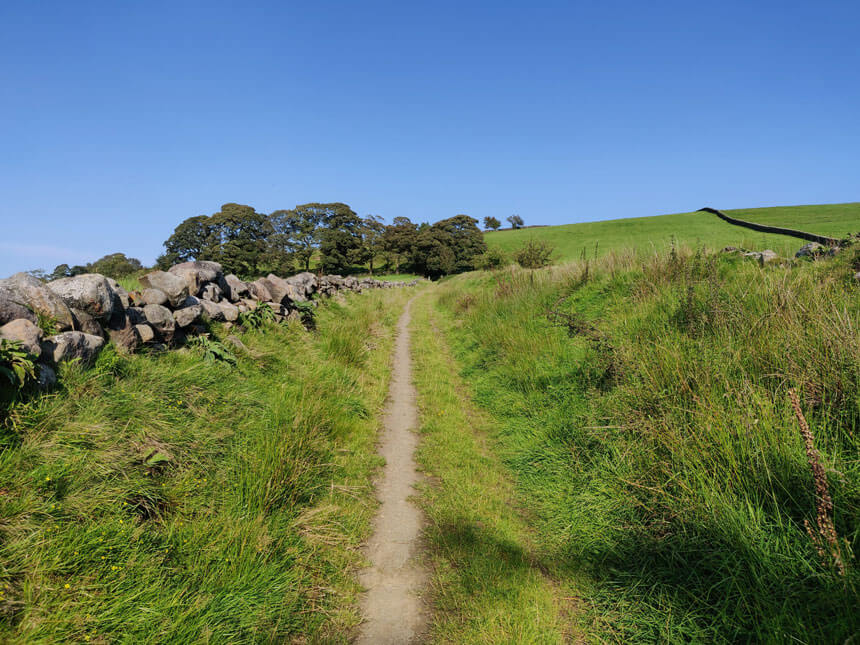
Longer walks around Wycoller include a route up to Boulsworth Hill and the trig point at Lad Law, heading back through the pretty village of Trawden.
Wycoller is also just off the 44-mile-long Brontë Way, which links sites across West Yorkshire and East Lancashire that were important to the Bronte sisters, including the Brontë Parsonage Museum in Haworth.
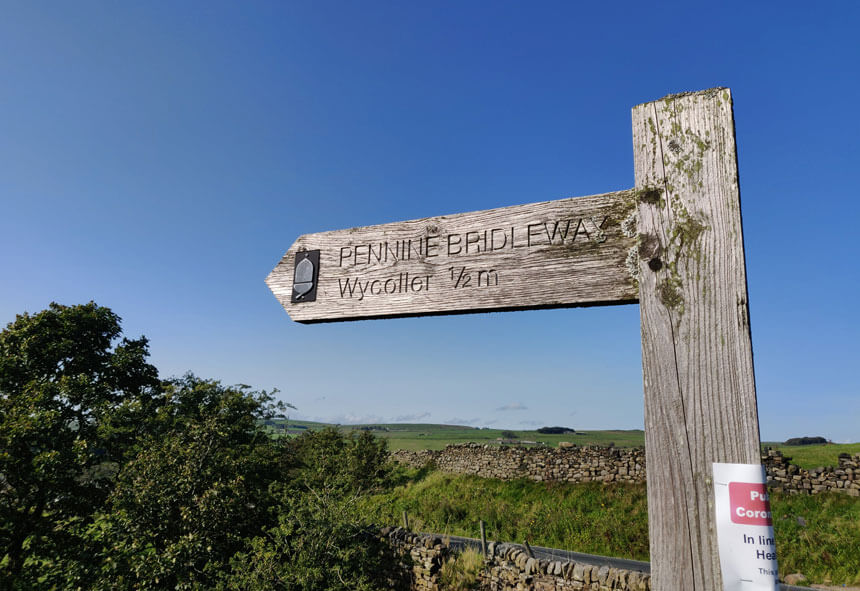
The Pennine Bridleway, an alternative to the Pennine Way for horse riders and mountain bikers, runs through Wycoller.
Wycoller and the Brontës
Charlotte, Emily and Anne Brontë lived just over the hill from Wycoller in Haworth. Charlotte in particular knew Wycoller well, and would have passed through the village on her way to stay with her friends Sir James and Lady Kay-Shuttleworth at Gawthorpe Hall near Burnley.
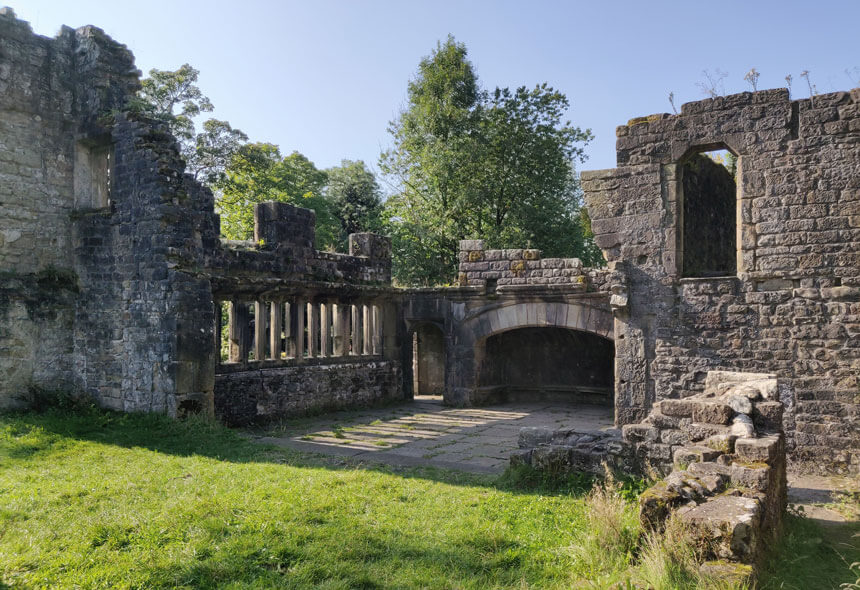
Wycoller Hall is believed to have been the inspiration for Ferndean Manor in Charlotte Brontë’s novel Jane Eyre. In the novel, Ferndean Manor is described as “a desolate spot” “even more retired and hidden” than Mr Rochester’s home at Thornfield:
“The manor-house of Ferndean was a building of considerable antiquity, moderate size, and no architectural pretensions, deep buried in a wood. I had heard of it before. Mr. Rochester often spoke of it, and sometimes went there. His father had purchased the estate for the sake of the game covers. He would have let the house, but could find no tenant, in consequence of its ineligible and insalubrious site. Ferndean then remained uninhabited and unfurnished, with the exception of some two or three rooms fitted up for the accommodation of the squire when he went there in the season to shoot.”
After the fire at Thornfield, Jane and Mr Rochester move into Ferndean Manor to begin their married life together.
Some Bronte scholars have suggested that Charlotte took more than just house inspiration from Wycoller. The owner of Ferndean, Mr Rochester’s father, is reminiscent of Henry Owen Cunliffe, Wycoller Hall’s last squire, and another Cunliffe, Elizabeth, took the name Eyre when she married. A picture of Wycoller Hall was used on the cover of an 1898 edition of Jane Eyre.
Ghosts at Wycoller
When you visit Wycoller, it’s really not surprising that the ruins of Wycoller Hall are reputed to be home to several ghosts. While it’s gorgeous, dreamy and romantic on a bright sunny day, it’s easy to imagine the Hall looking distinctly spooky on a misty autumn or winter night.
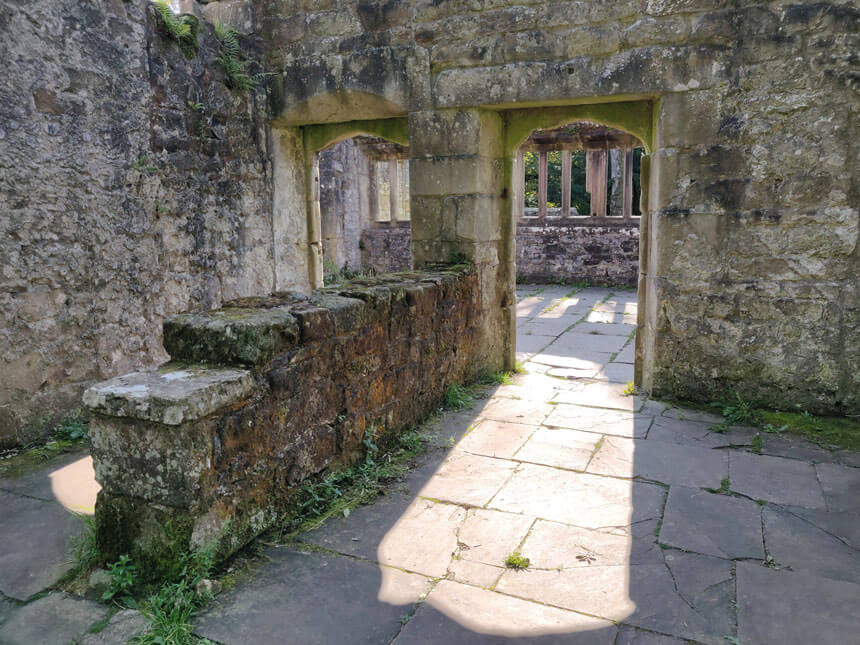
One of the Cunliffe family who owned the estate is believed to have returned home one evening in a rage, having heard that his wife was having an affair. He murdered her and fled from the village on horseback. Once a year, the sound of a horse is heard riding through the village, over the Pack Horse Bridge and up to the Hall. Blood-curdling screams are heard coming from the Hall, followed by the crack of a whip and the sound of a horse’s hooves galloping away. Those who’ve seen the spectre say the horse breathes fire from its nostrils.
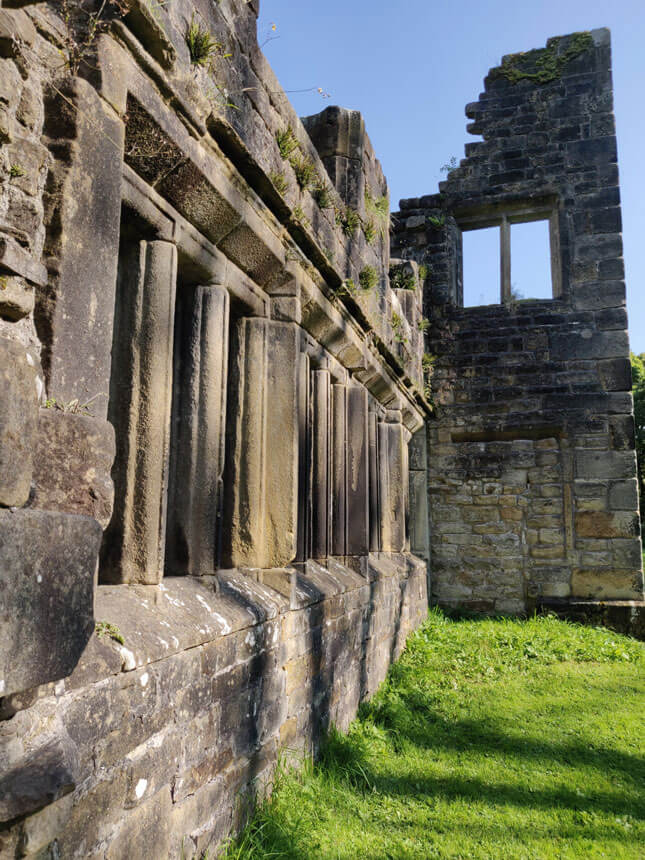
Another ghost in the Hall is ‘Black Bess’, a woman who’s been seen by visitors to the Hall. She appears in the ruins, dressed completely in black silks, before disappearing into thin air. Some people believe that she is the murdered wife from the first story, while others think that she was a West Indian woman who met and married another Cunliffe in her homeland. On the voyage home, the story goes that her husband regretted the marriage and threw her overboard. Her ghost followed him home to Wycoller, where she haunts the house they should have shared.
Not all Wycoller’s ghosts are human. A terrifying hound called Guytrash Lightfoot patrols the ruins of Wycoller Hall, bringing death or disaster to anyone unlucky enough to see it.
Pearson House, near the tea shop in Wycoller village, is haunted by a ‘Blue Lady’ who floats through the wall into the adjoining house. Another house in the village, Wycoller House, has a resident poltergeist.
How to get to Wycoller
By far the easiest way to get to Wycoller is by car. It’s an easy day trip by car from Leeds or Manchester, although the last couple of miles are on very narrow, single-track roads. You can’t drive into the village; instead you’ll need to park at the country park’s car park which is a 500 metre walk down a gentle slope to the village.
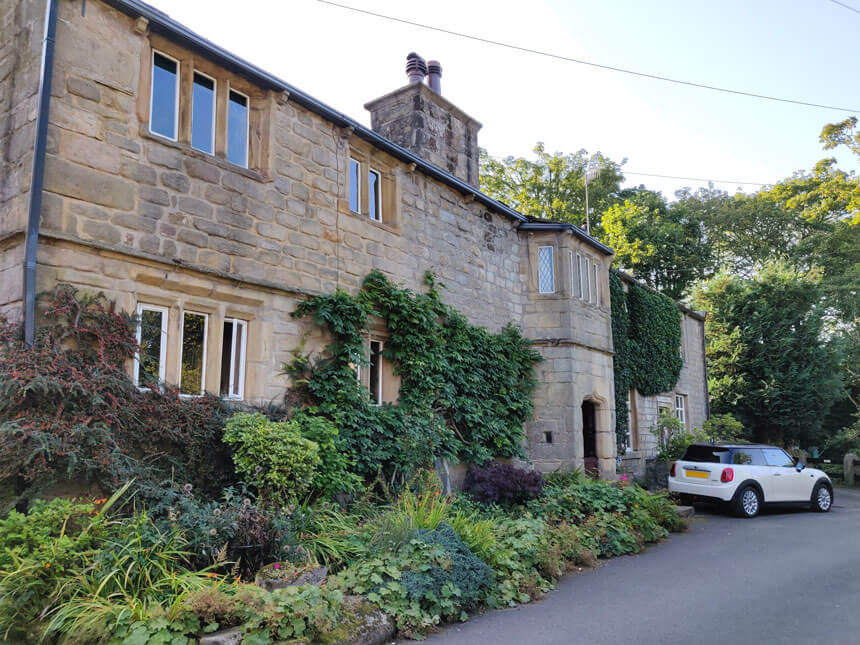
Parking currently costs £1 for the day. If you don’t have any cash you can pay for your parking using the RingGo parking app. There have been reports of car break-ins at the car park so make sure your car is securely locked and you’ve put any valuables out of view.
There’s also a car park at the Atom Panopticon, a 15-minute walk up the hill from Wycoller. This car park is free.
Getting to Wycoller by public transport is trickier. From Colne, you can take a bus to Laneshaw Bridge or Trawden and then walk the mile and a half to Wycoller, or get a taxi. There are no direct buses.
Where to eat and drink near Wycoller
Sadly, the only place to eat in Wycoller, the Old Dairy Tearooms closed in 2023 so unfortunately there’s no more fairy floss.
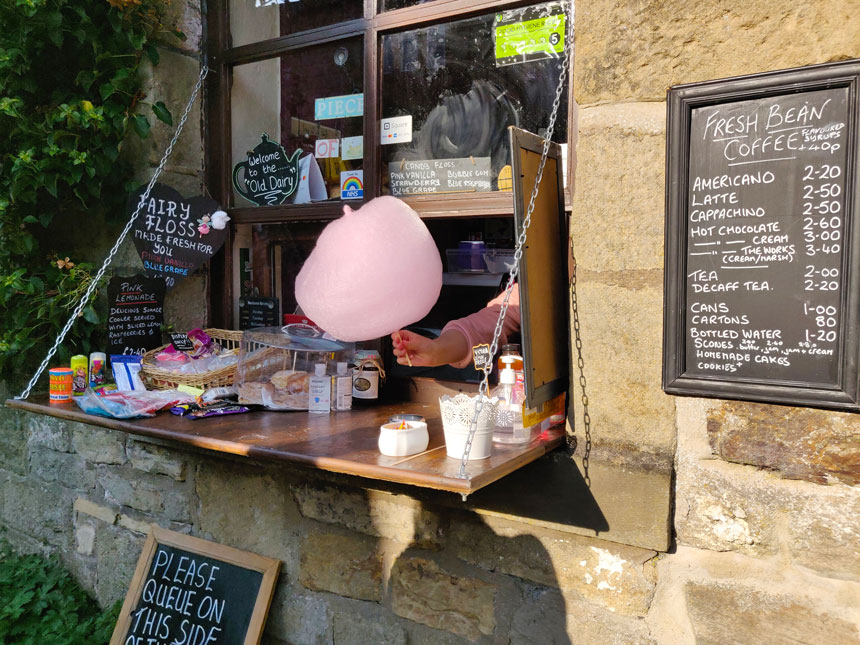
If you’re visiting Wycoller for the day, I recommend bringing a picnic. There are benches all around Wycoller Hall and plenty of picnic tables in the field beyond Aisled Barn. You might have to share your dinner with the ducks who live in the village duck pond though!
For a more substantial meal, try the community-owned Trawden Arms or the Emmott Arms. Both are traditional village pubs serving well-reviewed pub grub. On the other side of Colne, the Craven Heifer in Kelbrook is a very popular gastropub – make sure you book in advance.
Where to stay for your trip to Wycoller
If you’re looking for somewhere to stay near Wycoller, you’ll be spoilt for choice. There are lots of holiday cottages, B&Bs and pubs with rooms nearby. Some of the best-reviewed in the area are Rye Flatt Farmhouse B&B, Moorlodge Country Retreat holiday apartments and the rooms at the Craven Heifer inn.
For something a bit more luxurious but still within easy reach of Wycoller, try The Devonshire Arms Hotel & Spa. This hotel is in a beautiful setting near the ruined abbey and stepping stones at Bolton Abbey and makes a perfect weekend getaway.
More places to visit near Wycoller
There are lots of other interesting places to visit near Wycoller.
Skipton is a pretty market town 13 miles from Wycoller. There’s a magnificent castle, canal boat rides, a lively market and some great pubs.
As well as the Atom, there are three other Panopticons across East Lancashire, in Blackburn, Burnley and Rossendale. Each Panopticon offers a magnificent view over the local countryside; it’s well worth the trip to see them all (if you’re short on time then Blackburn’s is the least impressive).
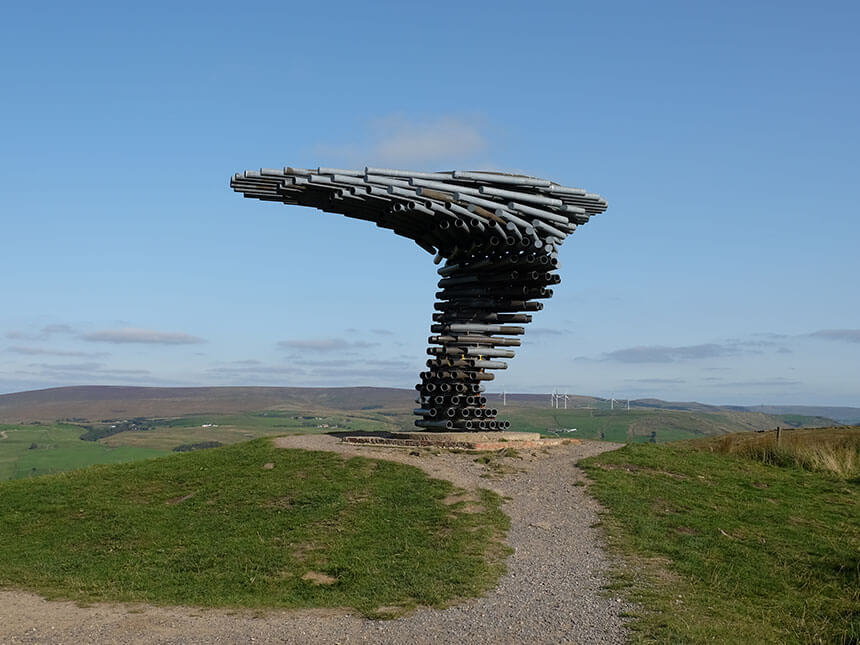
Also in Burnley, Gawthorpe Hall is a historic house and garden, owned by the National Trust. It was redesigned in the 1850s by the same architect who designed London’s Houses of Parliament and Highclere Castle – better known as TV’s Downton Abbey. It’s sometimes called the “Downton of the North”.
Inside Gawthorpe Hall you can see a collection of portraits on loan from the National Portrait Gallery, as well as The Gawthorpe Textiles Collection, a treasure-trove of embroidery, needlework and lace.
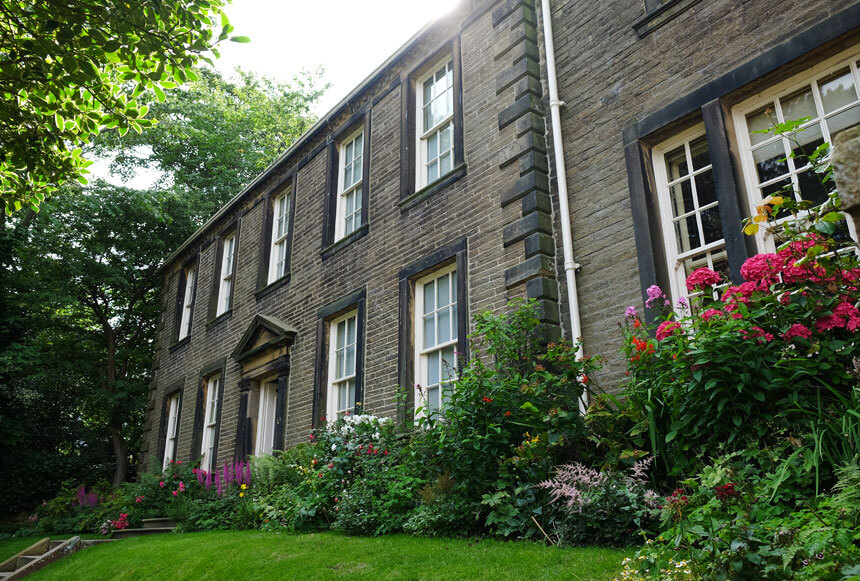
With Wycoller’s Brontë connections, it would be a shame not to visit Haworth and the Brontë Parsonage Museum where Charlotte, Emily and Anne Brontë grew up. Haworth is a pretty mill town with plenty to do; as well as the Brontë Parsonage there are walks over the moors, shops and cafes and the Keighley and Worth Valley heritage railway.
Are you planning to visit Wycoller?
Pin it for later!
